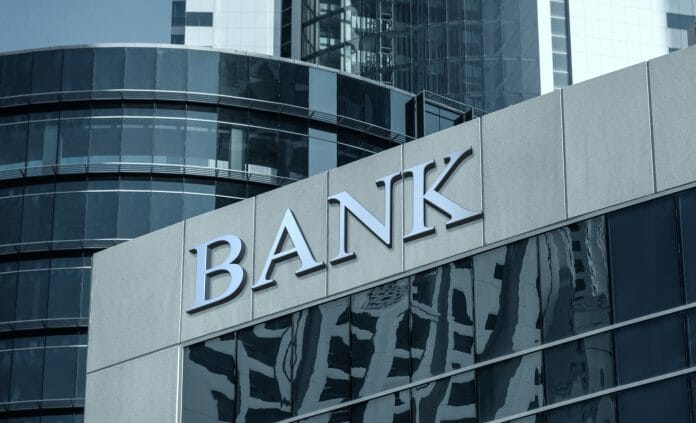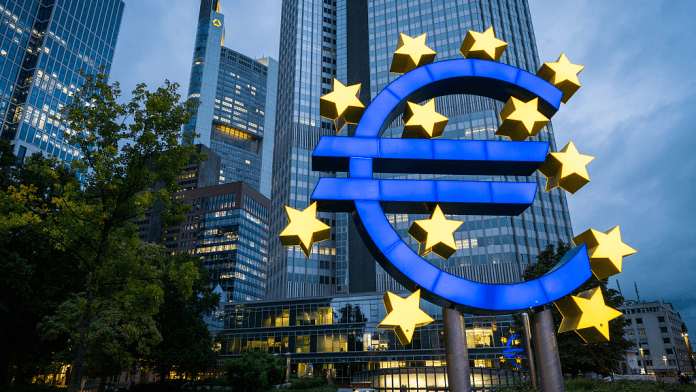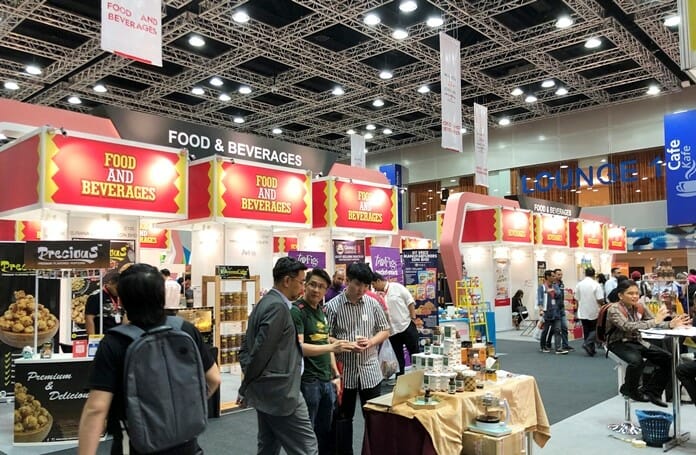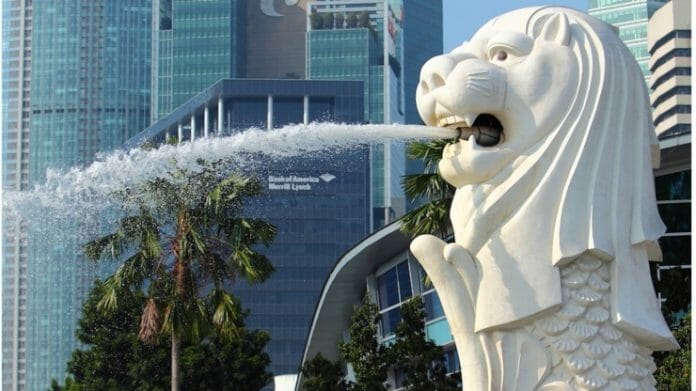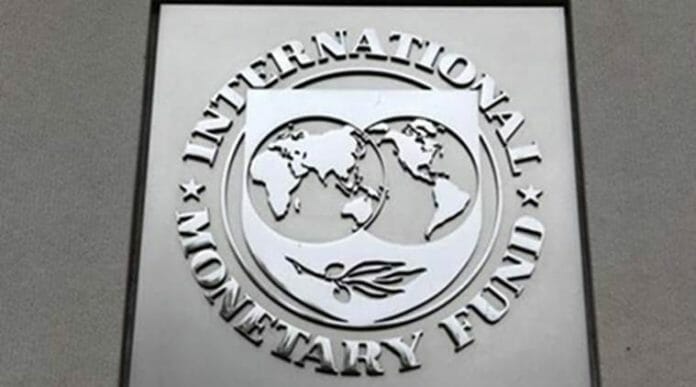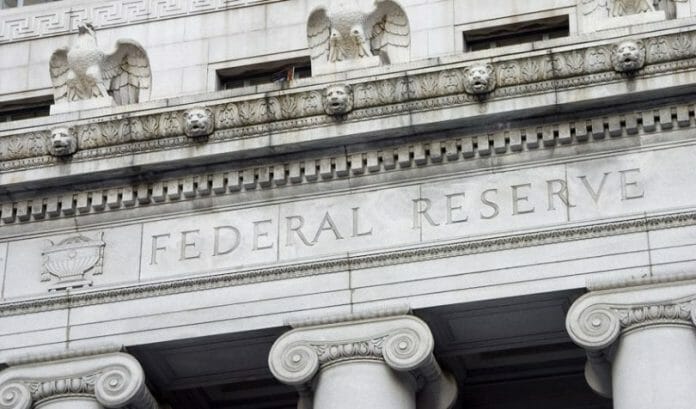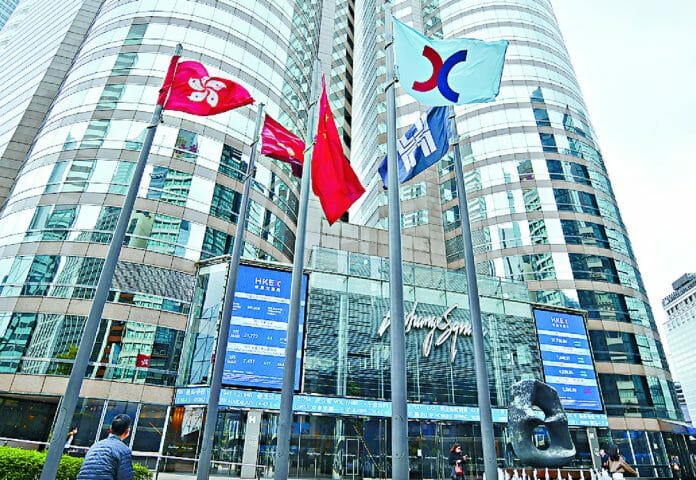The Halal food industry has been steadily growing as demand for halal food products increases around the world today.
Halal foods, which are prepared according to the highest standards of hygiene that emphasise healthy and safety, are consumed by an international Muslim community of over two billion. More recently, halal foods have become an attractive food product for non-Muslims as well, who are becoming increasingly concerned with the quality and safety of their foods.
Malaysia has been a global market leader in the Halal food industry and was ranked first in the Global Islamic Economy Index for nine consecutive years. In 2022, the total halal export value was RM 59.46 billion, contributing 7.4% to countries GDP. The Malaysian Halal Food Industry is expected to grow to US$ 113.2 billion (RM500.17 billion) by 2023, and contributing 8.1% to national GDP. As of 2021, there were approximately 200,000 enterprises engaged in the halal food business.
A total of 3.97 billion was invested into the Halal food sector between 2020 and 2021. These included investments into Halal food tech platforms such as online cloud delivery apps and cloud kitchens. In particular the Fast-Moving Consumer Goods sector has been receiving much attention. Saudi Arabian Food Organisation C3 Arabia, is investing US$200 million to open 500 outlets over the next years in a joint venture with the investment group WK Holding. In the United Kingdom, Sainsbury will be launching over 12,000 FMCG products in the Middle East and Africa through its new operations port at Oman’s Sohar Port.
27 Group cited that the Malaysia food sector has also been attracting significant foreign investments, as US based meatpacking giant Tyson foods recently acquire at 49% stake in the Malayan flour mills poultry business for $104 million. Johsonville LLC, another US based company, also recently acquired the Malaysia B2B processed meats company PrimaBaguz.
As the industry continues to grow in popularity, what are the key questions surrounding the state of halal food industry today and its projected growth prospects moving forward.
What is Halal Food?
The term ‘Halal’ is used within Islamic communities to denote anything which is considered permissible under Islamic Syariah law. With regards to commercial products, the term halal is used to describe items that are permissible to be used or consumed under Islamic law, and extends towards pharmaceuticals, cosmetics and food products. Halal food refers to food items that are allowed to be consumed under Islamic law according to traditional beliefs and practices. Certain food items and ingredients which are not permitted are referred to as ‘Haram’ and are not consumed by those who practices the Muslim faith.
What types of food products are considered to be Halal?
Most food products and ingredients are considered to be Halal, so it is more useful to consider the items which considered to be non-halal. Some examples of non-halal food products include anything that has been prepared with alcohol, pork or carrion (animal carcass). Food items that also contain blood or blood by products are non-halal. In addition to the products themselves, the method of preparation of certain food items is also an important factor. Meat products, for instance, must be sourced from animals that have been slaughtered in the appropriate way. Halal standards may vary slightly within each Muslim country and are usually dependent on a national certification body for determining the appropriate standards.
What is the role of Halal certification?
In order for a product to be considered halal, it must first receive certification from an official Halal certification body. Businesses that wish to trade in halal food products must obtain the appropriate certification from the assigned national certification body. In Malaysia, the Department of Islamic Development Malaysia (JAKIM) is responsible for establishing whether a product is halal or not, and will provide the necessary certification accordingly.
How has the international Halal food market been performing?
Muslims spending on halal food was valued at US $ 1.27 trillion in 2021 and forecasted to reach US $1.67 trillion by 2025, and the market is expected to grow at a CAGR of 7.1% between 2021 and 2025. The market has been in recovery in response to the supply chain disruptions brought about by the Covid-19 pandemic and the subsequent Russian-Ukrainian conflict. These disruptions have led to an increased global awareness over the need for ensuring greater food security, while also driving nations within the Organisation of Islamic Cooperation (OIC) to strive for greater self-sufficiency with regards to food production.
Who are the biggest consumers of Halal food products?
Halal food products are predominantly consumed by members of the Muslim community, although there have been trends indicating that non-Muslims are showing greater in interest in Halal products due to the increasing demand for healthy and safe food sources. Pew Research Centre’s report from 2017 projected that the global Muslim population would increase by approximately 70% by 2050 as compared to 2010 levels. The report estimated that Muslims would make up about 29.7% of the world’s population by 2050.
Which countries are the biggest consumers of Halal food?
Muslim spending on Halal food products is the highest in Indonesia ($15.4 billion), Egypt ($120.1 billion) and Bangladesh ($125.1 billion), while the biggest importers of Halal food products are Saudi Arabia ($20.01), Indonesia ($17.54) and Malaysia ($16.21).
Which countries are the biggest exporters of Halal food?
The four biggest exporters of Halal food products are Brazil ($16.45), India ($17.45) the USA ($13.22) and Russia ($12.74). It is worth noting that these are non-OIC nations and make up approximately 29% of the global supply of Halal food products.
What are some key technological developments that are driving the industry?
One of the biggest drivers for innovation within the industry relates to the need for better traceability and logistics capabilities. Here in Malaysia, for instance, Malakat Ecosystem, developed the world’s first halal blockchain network, allowing users to trace the origins of imported beef products. The Singaporean company OneAgrix plans to launch a traceability solution for its platform in partnership with Switzerland owned INEXTO, a cloud-based global tracking solution. In Japan, the logistics company Nippon Express Co, launched a new halal-certified domestic air cargo transport service to expand its logistics capabilities within the country.
There have also been developments in the e-commerce sector, with companies looking to expand their operations into the B2B marketplace segment. The e-commerce platform Halal Street UK signed an MOU with Malaysian Alliance Islamic Bank (AIS) to connect Malaysian SMEs with the steadily growing UK Halal marketplace. Chinese Telecoms giant Huawei also signed an MOU with Malaysian company Alladin Group to establish a technology service network for a global halal-focused cloud-based social commerce platform.
There have also been greater investments into the agritech related R&D, with various companies around the world looking to develop novel farming technologies to support operations. In Nigeria, a country with a large Muslim population, the Agribusiness company Farm Konnect launched Africa’s first agricultural electronics centre to develop climate-smart farming and precision agriculture solutions. In Dubai, the government has launched Food Tech Valley, a specialised zone hosting farming R&D facility, smart logistics, vertical farming sections and incubators.
Another emerging technological trend is with respect to Cloud Kitchens. A cloud kitchen is where a food is prepared at designated kitchens that are linked to virtual restaurants. The food is picked up and delivered to customers who make purchase using online food delivery platforms. In the UAE, the cloud kitchen platform Kitopi managed to raise US $ 415 million in series C funding from investors, and will be expanding its operations into the Saudi Arabian region of Jeddah. Pakistani company Hotpod launched its own Kitchen as a Service (KaaS) platform and will start with three turnkey kitchens in Karachi.
How has the industry been responding to concerns surrounding food security?
The impact from the global pandemic as well as from the ongoing Russian-Ukanian crisis has been felt by many countries within the OIC region. In Bangladesh nearly 80% of households were forced to cut back on food expenses while the rising cost of feed led various poultry farms to close. In Nigeria, the government has asked for immediate FDI into its agricultural industry as 230 million people battle with chronic food insecurity The OIC Islamic Organisation for Food Security (IOFS) has planned to implement 16 food security programs comprising the development of key commodities along with the establishment of the Islamic Food Processing Association (IFPA), a Grain Fund and a Food Reserve.
In response to these and other food security related issues, the industry has been moving to ramp up investment into industrial expansion and innovations to improve productivity. Saudi food company Almarai will be investing US $ 1.76 billion to double its share in the poultry market in the Middle East, while in the UAE Al-Ain farms in will be will be investing US $20 million to upgrade its dairy production capacity to 100 million litres.
Elsewhere, strategies are being employed by governments to meet national food security needs. The agricultural ministry of Oman has been moving to support farmers in efforts to diversify crop production and establish commercial fields to grow grapes, bananas, mangoes and sweet lemon. The NEOM Megaproject in Saudi Arabia will be building the largest fish hatchery in MENA (Middle East and North Africa) in partnership with the Tabuk Fish company. In Lagos, Nigeria, the state government launched a five-year plan to generate investments of up to US $ 10 billion in the agricultural sector. The state will also be developing an aquaculture centre for excellence, which will include a fish hatchery for 50 million fishes.
Several countries have also entered into bi-lateral agreements to support collective efforts at building food security. Egypt and South Sudan, for instance, will be working together on agricultural capacity building and establishing the integrated farming of crops, livestock and fish in South Sudan. Indonesia has invited Malaysian companies to help build the halal products industry in both countries, with a particular focus on agro-business and agritech. The UAE and India have developed a food corridor with the tech platform Agriota linking farmers in India with the UAE food industry.
What are some other industry trends worth taking note of?
There has been a move in recent years to improve procedures surrounding halal standards and certification in the industry. For instance, the OICs Standards and Meteorology Institute for the Islamic Countries (SMIIC) introduced a halal supply chain management system standard, covering transportation, warehousing and retailing. Indonesia has significantly revised its own Halal regulations to speed up, simplify and clarify processes with the aim of reducing processing time and facilitating certification for micro and small businesses.
There have also been moves by the Indonesian government to improve its halal food ecosystem through digital technologies. It introduced a new halal information system which puts forward all halal procedures and programs that integrated with halal marketplaces, apps, and e-money providers. The platform will allow the codification and digitalisation of certificates to improve the tracking of the value and volume of halal products.
There has also been a drive towards ensuring greater sustainability in food production within the industry, as consumers are increasingly looking for companies that practice sustainable production methods. In the Middle East, Nestle’s Al Maha factory in Dubai features the world largest solar plant, producing 85% of its energy output. The Agthia Group in UAE has opened a new packaging technology centre in Al Ain that will be developing innovative and sustainable weather proof packaging.
Increasing demand for vegan and plant-based products has also driven many companies to invest in the production of these types of goods. In the UAE, retail company Spinneys launched its ‘Power of Plants’ initiative to promote vegan and plant-based foods in response to a 600% growth in plant-based product sales. UAE based Al-Islami foods also launched its preservative free plant based ‘beef’ burger it an effort to offer plant-based halal products to its market base.
Where is the halal food industry headed in the next few years?
With the world’s Muslim population expected to reach 2.2 billion by 2030, demand for halal food products will continue to rise. The industry will also need to respond to increasing demands brought about by mounting food insecurity and countries will be looking to ensure that they achieve self-sufficiency in food production. As such, opportunities will likely continue to expand in the farming, agriculture and secondary processing sectors, as governments invest heavily in dairy, poultry and staple crops. Saudi Arabia, for instance, has achieved 60% self-sufficiency in its poultry production, and aims to reach a target of 80% by 2025. The country plans to expand production into the poultry, vegetables and fish sectors.
Companies will also be increasingly looking to provide solutions which emphasise convenience, such as ready to eat meals and fast-food deliveries. In Singapore, the Kimly Group announced the acquisition of a 75% stake in halal food service Tenderfresh for US $40.7 million. The US fast-food chain Chuck. E Cheese plans to open 50 stores in the Middle East, along with 25 new stores Saudi Arabia. The US chain Halal Guys plans to double its footprint in the Midwest region, while the South Korean convenience store chain CU released two ready-to-eat meal packages made with halal certified ingredients.
The halal food industry will also be aiming to increase production capabilities to support global food security as well as secure the means for properly countering the challenges brought about by climate change. To achieve these goals, there will likely be greater investment into agricultural technology as well as biotech solutions and smart farming operations. This can be seen, for instance, with the UAE signing an agreement with Israel to build greater capacities in agritech, plant-based and cell-based foods. In Nigeria, exports of an insect resistant for variant of cowpea have the potential to generate US $638 million in revenues for Nigeria in six years.
There are also opportunities waiting in the wings for cross-border and domestic agribusiness arrangements within OIS countries, as well as within the eCommerce marketplace. The introduction of platforms that are able to connect livestock and vegetable farmers with manufacturers, wholesalers, and retailers both locally across borders can support government efforts to develop rural and agricultural areas while strengthening supply chains and reducing food waste. Well-developed and integrated online platforms such as these with their associated apps could go a long way towards supporting the continued growth of the industry.
What are some of the challenges the industry faces moving forward?
As the industry continues to grow, its main challenges centre around the need for technology to keep up with growing market demands as well as from potential disruptions that may be brought about by climate change. Many countries within the OIS network do not as yet have the necessary investment ecosystems to support the incubations of technology startups. While countries such as the UAE and Malaysia, for instance, might be able to compete the UK, France and Germany to a degree with regards to technological innovations incubations, most OIS nations will need to invest the appropriate resources to develop the necessary incubations mechanisms to support the development of competitive food tech companies.
The industry also faces the challenge of climate change, which has the potential to significantly disrupt food production and interfere with domestic and international supply chains. The increasing need for clean and reliable water sources, the potential threat of extreme weather events, and rising global temperatures are all considerations with countries and organisations need to be cognisant of when developing halal food products and services.
27 Group is a business consultancy and advisory organisation geared towards project development and socioeconomic transformation strengths. They provide project management and master planning services for clients within multiple industries and are also keenly involved in the development of socioeconomic initiatives within the public sector. Our guiding ethos of ‘Rebuilding Humanity’ drives us to deliver transformative projects with the right amount of care and attention, meeting both stakeholder expectations and the essential needs of the wider communities that the group serves.


